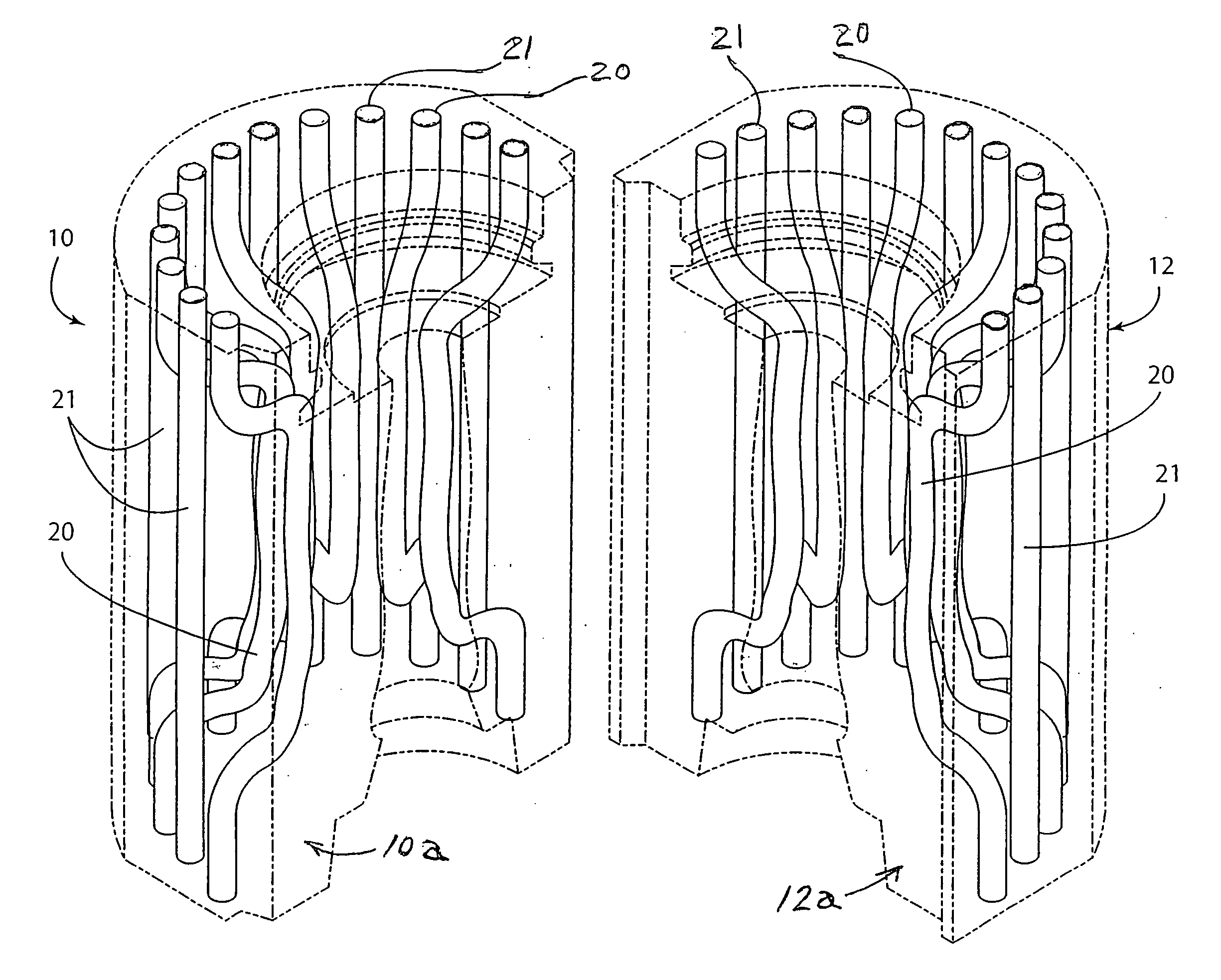Glass-forming die and method
a technology of metallic dies and glass, applied in glass tempering equipment, foundry patterns, moulding apparatus, etc., can solve the problems of defective bottle formation, limited ability to change the distance, and insufficient plastic parison, so as to improve the heat removal of that region, improve the control of heat removal, and improve the uniformity of heat removal
- Summary
- Abstract
- Description
- Claims
- Application Information
AI Technical Summary
Benefits of technology
Problems solved by technology
Method used
Image
Examples
Embodiment Construction
[0021] Referring to FIGS. 1 and 2, a pair of parison-forming dies 10, 12 known as ‘blank’ molds are shown for molding a ‘gob’ of molten glass to form a parison therebetween in the bottle making process described above. The dies 10, 12 include respective die bodies 10a, 12a having surfaces 10b, 12b which mate and contact together when the dies are closed or pressed together in a bottle making machine.
[0022] The die bodies include respective mold cavity regions 10c, 12c that form a complete molding cavity having the three dimensional shape of the parison when the dies 10, 12 are closed or pressed together in the bottle making machine. The mold cavity regions are defined by respective molding surfaces 10s, 12s on the die bodies 10a, 12a. As is shown in FIG. 1, the molding surfaces each has a curved contour to collectively form a portion of the curved outer surface of the parison. In practice of the invention, the molding surfaces 10s, 12s optionally can be provided with a coating that...
PUM
| Property | Measurement | Unit |
|---|---|---|
| Grain size | aaaaa | aaaaa |
| Temperature | aaaaa | aaaaa |
| Length | aaaaa | aaaaa |
Abstract
Description
Claims
Application Information
 Login to View More
Login to View More - R&D
- Intellectual Property
- Life Sciences
- Materials
- Tech Scout
- Unparalleled Data Quality
- Higher Quality Content
- 60% Fewer Hallucinations
Browse by: Latest US Patents, China's latest patents, Technical Efficacy Thesaurus, Application Domain, Technology Topic, Popular Technical Reports.
© 2025 PatSnap. All rights reserved.Legal|Privacy policy|Modern Slavery Act Transparency Statement|Sitemap|About US| Contact US: help@patsnap.com



